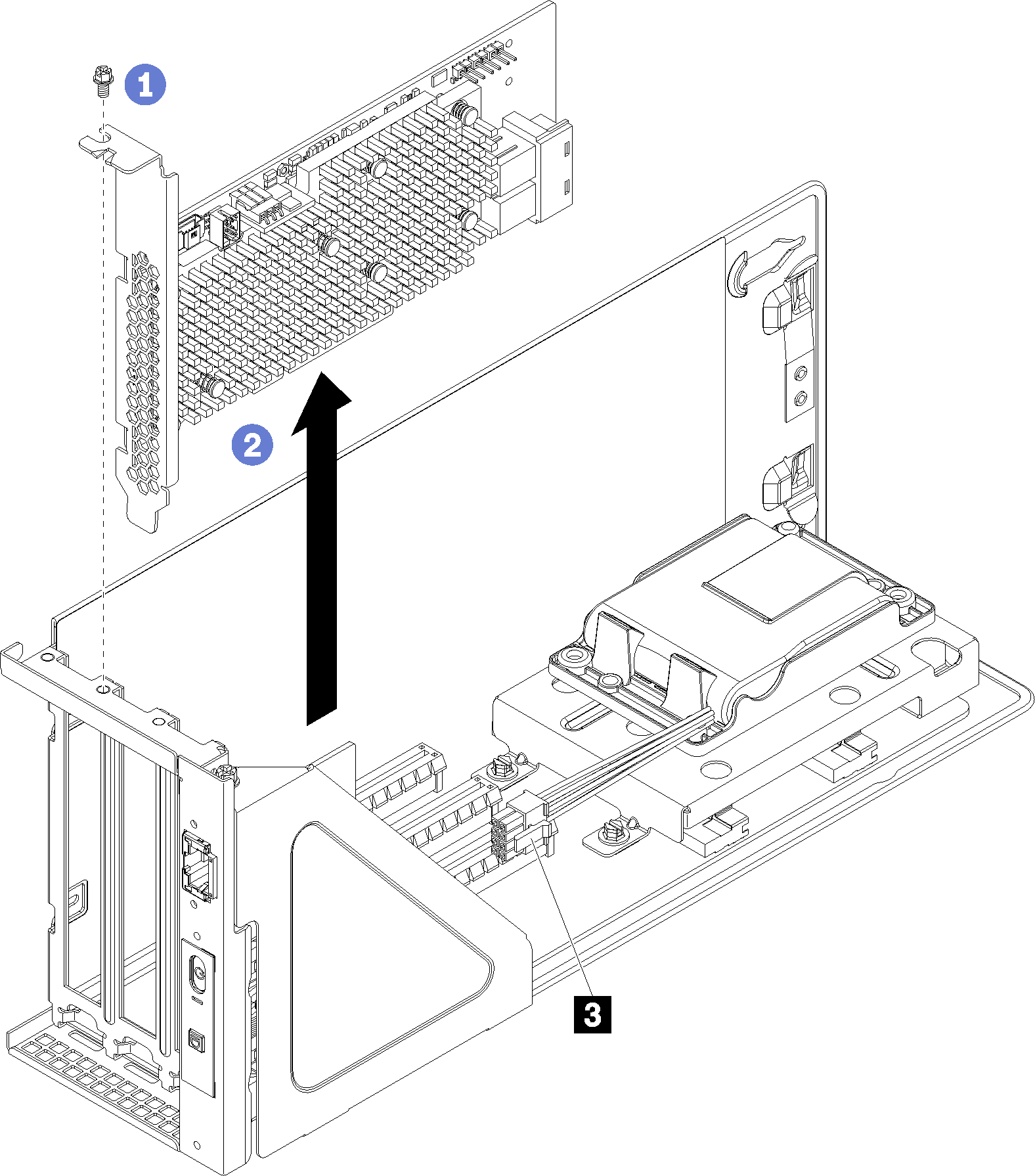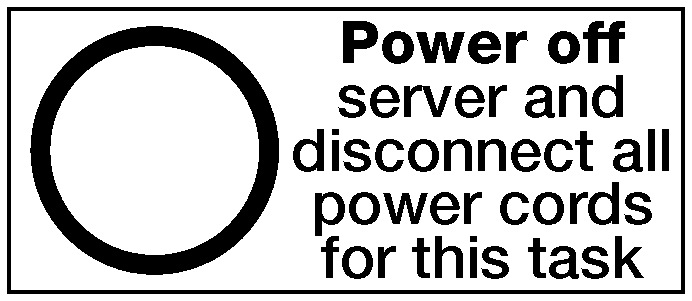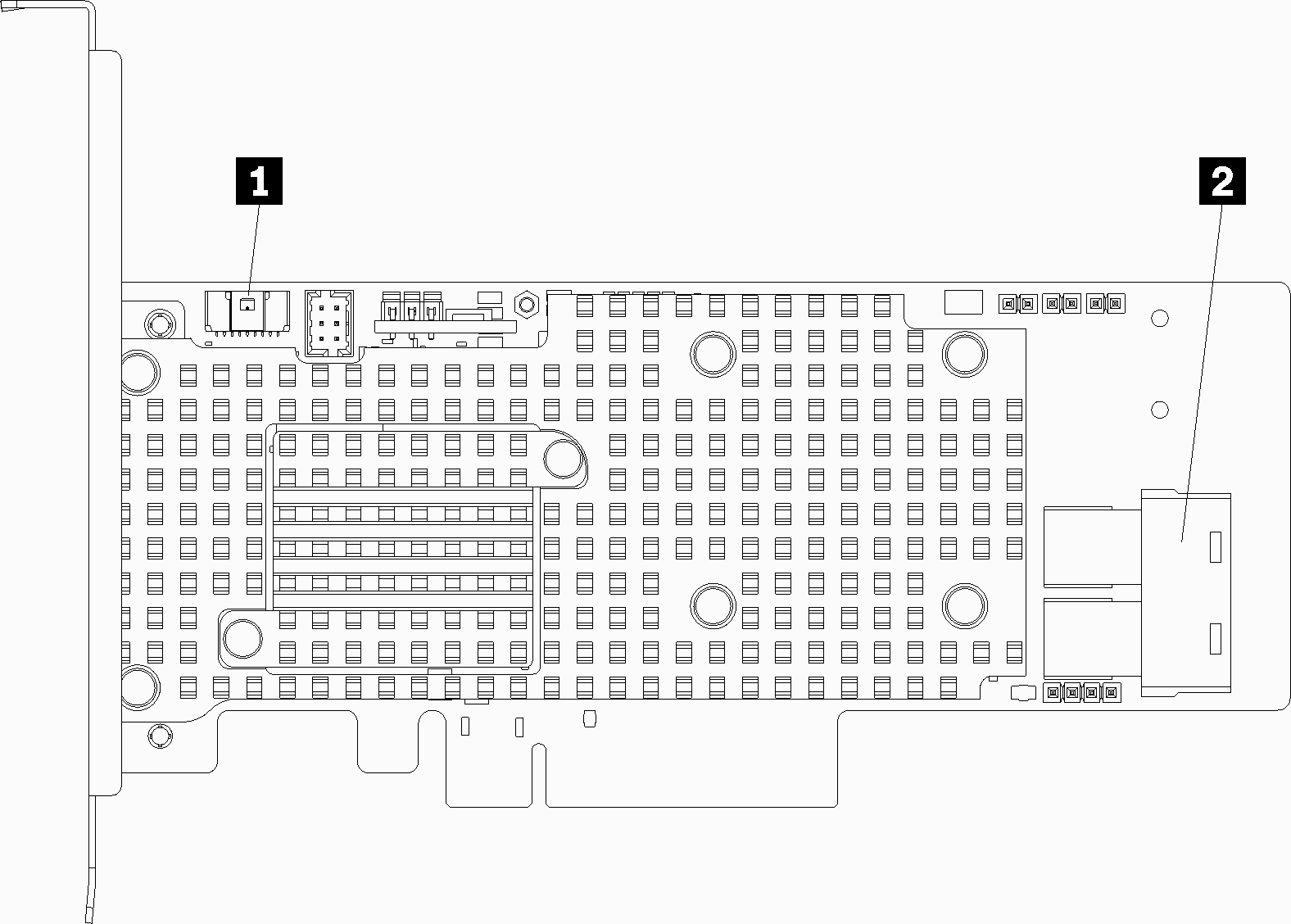Remove a RAID adapter from the I/O expansion cage
Use this information to remove a RAID adapter from the I/O expansion cage.
Power off the server. See Power off the server.
Disconnect power cords from both power supplies, which are located in the rear of the server.
Record the location of the cables in the front of the PCIe adapters that are installed in the I/O expansion cage at the front of the server, and disconnect the cables.
Disconnect the management port cable from the management port in the I/O expansion cage, if necessary.
Loosen the two captive screws located on the front of the server. If necessary, use a P2 screwdriver to loosen the screws.
Pull the server forward until the slide rails click into place.
Remove the top cover. See Remove the top cover.
Remove the air baffle. See Remove the air baffle.
Remove the system fan cage. See Remove the system fan cage.
Remove the I/O expansion cage. See Remove the I/O expansion cage.
To remove a RAID adapter from the I/O expansion cage, complete the following steps:

Install a supported RAID adapter or HBA. See Install a RAID adapter in the I/O expansion cage.
If you are removing a RAID 930-8i adapter and not installing a new RAID 930-8i adapter, remove the RAID 930-8i supercap. See Remove the RAID 930-8i supercap.
Connect the cables back to all PCIe adapters.
Install the I/O expansion cage. See Install the I/O expansion cage.
Install the fan cage. See Install the system fan cage.
Install the air baffle. See Install the air baffle.
Install the top cover. See Install the top cover.
Push up on the latches on the slide rails and push the server back into the rack.
Tighten the two captive screws located on the front of the server to secure the server in the rack.
NoteAlways secure the system in the rack if your are moving the rack.Connect all cables to the ports on the front of the server, including the management port, if necessary, and all PCIe adapter ports. The management port and PCIe adapter ports are located in the I/O expansion cage.
Connect power cords to both power supplies, which are located at the rear of the server.



